What is the foundation of all effective marketing?
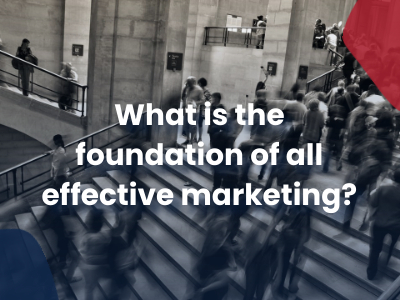
Most people’s favorite part of building a marketing campaign are the visuals. While how your marketing looks is important, who you are sending it to, and how you are sending it should be the first step with any marketing. Those two things inform everyone’s favorite part of marketing: results.
It’s like a luxury car…looks beautiful and sure makes an impression, but if there’s no gas in the tank, it won’t go anywhere. Going (hopefully fast) is the goal!
So, how do you know what the best fuel is for your marketing campaign?
The right fuel is determined by who your audience is, what your campaign objectives are, and the best ways to reach your audience.
Which comes back to the two most common questions we get asked:
- What data do I need for marketing?
- How do I reach my customers?
What data do I need for marketing?
Really the first question is: what data is available? Viant had a great illustration about the different types of marketing data.

Data Types (Explained with Cows)
First-Party Data
You own a cow. You know the cow’s name, what it eats and where it sleeps. These are your customers; you have their contact information in your CRM. They know you have their information.
Second-Party Data

You rent some cows from a friend for a fee but you don’t necessarily know the cow’s name, what it eats, or where it sleeps. You have to pay your friend each time you need some milk. Second-party data is first-party data sold to another company for a specific use. For example, say you own a company and you looking to expand into a new market. You can buy a list of first-party customer data from a company in the new market you are tapping into and market to them for an agreed-upon number of times. However, with the increased privacy and data laws using second-party data can sometimes be problematic.
Third-Party Data
There’s a village full of cows that were bought, rented, or found. The cows with similar traits are herded together and sold to you. You don’t know where the cows came from or sometimes if this is even a real cow. Traditional list data and many digital audiences call into this category. Which is one reason it’s so important to get data from a good source! You need to be able to trust that you aren’t buying fake cows or ones that don’t match the traits you need. Another thing to remember about 3rd party data is that it is the most impacted by the cookie and privacy laws! Relying too much on traditional 3rd party data can set you up for failure in the future.

Looking into the future with post cookie advertising, traditional 2nd and 3rd party data channels are going to change. The ways to gather consumer data have already changed in a lot of ways. For example, Connected TV doesn’t support cookies and instead relies on IP targeting. This is data you can use for marketing but doesn’t have the same types of information you would get with traditional list data. You are going to get demographic data and location data but probably not names or a specific address. Using IP targeting is a great way to maintain your same flow of data-driven campaigns while still working within updated privacy laws.
This is often called people-based data. When you use people-based data you know you are reaching real people in real households.
What data do you actually need?
The data you need is based on two things: What do you know about the people you are trying to reach? What is your goal with this campaign? What you know about who you are trying to reach impacts your demographics and helps informs decisions about methods and channels. Your campaign goal also helps you figure out what channels to use as well as campaign scale and message.
Questions you can ask to help learn about your customers:
- What are their basic demographics?
What gender to they identify as? How old are they? Where do they live? What is their relationship status? Are they educated? - What do they do for work?
What’s their job title and description? But more than that, are they a decision maker? What do they influence at work? - What are their interests?
Do they have hobbies or interests? What do they do in their free time? Are they part of a community? - What do they want and why can’t they have?
This a big thing for figuring out what you can do to help them! What are their goals and dreams? What are their pain points? Like, what keeps them up at night? - Why wouldn’t they buy from you?
What’s stopping them from buying from you? What objections may they have? - What ways would they prefer to interact with you?
Do they use social media? Do like a particular social media? Is a phone call the best way to reach them?
Learning about your customers and the best way to communicate with them is the foundation of effective marketing! Effective marketing = results!
How do these marketing channels stack up?
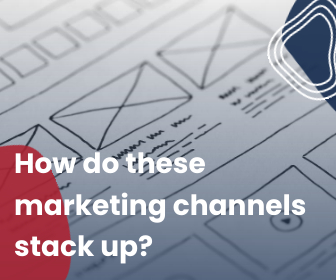
There are A LOT of different marketing channels out there. What are the pros and cons of some of the common ones?
Social Media
Pro
There are over 3.8 billion people on social media around the world. Social media is a fantastic way to connect with customers, build brand loyalty, and generate sales.
People don’t just want to buy from companies because they have good products and services. They want to know what your brand stands for in addition to what it sells. Social media can help potential customers get to you. Social media feel like a 1-on-1 conversation between the brand and consumer, which helps build loyalty.
Con
A lot of the value from social doesn’t show up immediately. It’s rarely simple to track social media’s ROI. Often the goal of social media is not just to generate sales but instead to build connections. Without measurable results, using social media can be discouraging.

Pro
Often it a brand’s only way to communicate with customers and can feel very one on one. A lot of millennial and gen z’ers expect to communicate with brands through email. Also, pretty much everyone has email so you know you will be able to communicate with people through email.
Con
We all get so. many. emails. Most office workers receive 127 every day. It can be hard to stand out from the crowd. People don’t have time to read emails that don’t actually provide them value.
Email marketing also has a lot of laws and rules connected to it that can hurt you if your aren’t careful!
Content/SEO

Pro
Customers often rely on a business’s website for information. Especially for local businesses, it can be the only way to know a shop hours or address. Putting the information on a website instead of a social media or directly in a browser legitimizes the information.
Good SEO gives your website credibility. It makes it easier for people to find your website when they search for it. And it helps create a smoother user experience.
Con
Bad SEO can hurt you. Most searchers never go past the first or second page of Google, though, which is why those top spots in the search results are so coveted. Having the proper SEO can prevent your website form getting organic traffic.
53% of all trackable website traffic comes from organic search. SEO is the main thing influencing how easy it is to find you online organically. Which is probably why it’s estimated that agencies and brands spent over $79.27 Billion on SEO services last year.
Google Ads

Pro
Where are people? On their phones. So, google ads is an extremely effective way to find people where they are. Google ads is great for brand awarness as well as retargeting. It is great if you want measurable results and analytics.
Con
Billboards, signs, posters, newspapers, and magazines all exist with in different physical spaces. With digital advertising however, we are all competing for the same ad space. That ad space is worth more now has less guarantees attached to it.
Trying to figure Google ads can feel like rocket science. There’s a large learning curve and it can a while to feel confident in the set up.
Print and Mail

Pro
Direct mail average open rate is somewhere between 68 and 90%, which is double, triple, or quadruple the average open rates of other marketing channels. Do people who open direct mail actually purchase? Yes! On average people who receive direct mail purchase 28% more items and spend 28% more money!
Why is direct mail so effective? It comes down to fact that we (humans) like getting mail. 41% of Americans of all ages look forward to getting their mail every day. We still want very real things in our hands, which is something totally lost in email inboxes or on social media. That tactile connection translates into 💰.
Con
Since Direct mail requires use of the postal system it has fixed costs. The graphic design of the mail piece may also have an additional cost. Using direct always requires a bit of math and if done wrong can hurt your ROI.
It’s not always posable to see direct, measurable results, from Direct mail campaigns. And if you can measure results, it may take a while to get the full picture.
Another thing that can be a disadvantage to direct mail is that you need a really good foundation of address data. The problem us that a lot of data providers don’t make sure that their data is accurate and that hurts the effectiveness of your campaign.
Connected TV

Pro
TV is a time-tested advertising channel. Although it’s a lot less common than it used to be, it can still be very effective. Many marketers are using CTV (connected TV) or OTT (over-the-top) channels to target consumers using streaming services and connected TV devices such as Hulu and Roku. Advertises are embracing these platforms as more and more ad space becomes available. Spending for CTV advertising is expected to grow from $6.94 billion in 2019 to $8.88 billion in 2020, a 28% increase.
Con
With customer attention spread so thin and cable tv subscriptions consistently falling, (over 16 million in the last five years) there’s a lot less advertising space available. Content consumption is at an all-time high and therefore, competition for viewer’s attention is as well. 84% of marketers say that it is getting harder to grab a consumer’s attention with television advertising alone.
Audiences today expect personalized and relevant targeted ads. Linear TV (cable and network television) often fall far behind in targeting capabilities. Therefore, it can be a challenge for advertisers to figure out how to integrate linear TV into their campaigns.
Data, Analytics, and Insight: What’s The Difference?

Data, analytics, and insight is kinda our thing. However, it seems like a lot of people use those words almost interchangeably. Are they the same thing? What do they mean for your business?
Data = The Information
Analytics = The Connections
Insights = The Actions
Data is pure information. For example, data about your current customers (first party data) is information such as average age, gender, location, or occupation. Analytics are the patterns that connect those things.
That would mean that data is knowing that you sent over 20,000 emails in June 2021. Analytics are knowing that your average open rate is 22.8% and your click through rate is 0.09%. The analytics show you a clearer image of the data.

I heard a really great illustration about this recently. Thinking about data and analytics can be compared to looking at an impression painting (like this one: The Cliff of Aval Etretat by Claude Monet.) Up close, all you see are the brush strokes and colors. That’s like looking at raw data. You can see what it is made off. But if you back up a few feet and look at the painting, you can see what the image actually is. Similarly, looking at analytics gives a more complete view of your data.
What’s the advantage of Insight?

Insight is the action connected to the analytics. Taking the example of 20,000 emails, insight would taking the knowledge that you have a great open rate but a terrible CTR and doing something about it. Applying insight means changing your call to actions or link to generate a better click through rate.
What’s another way to apply insights?
Building a Buyer Persona
What is a buyer persona? In the simplest terms, a buyer persona is exemplification of all of your customers. The most common way to do this is to create a fictional person that has the most common demographics and interests of your customers. Basically, you take data, analyize it, and then use insight to act.
Ask yourself: What are your customers common denominators? (Data) What do they want? (Analytics) What are their pain points? (Analytics) Once you have this information, it can be combined into a person you can picture makes it easier to connect with the crowd. (Insights)
Jim Edwards from Funnel Scripts explains buyer personas as the main character in the story of your company’s customer journey. Although your company already has its own personality, (or brand) in order to success the narrative you’re telling haws to focus on what the customer wants and needs. You are there to help them get to where they want to go. Jim Edwards example buyer persona was for a weight loss company. Their buyer persona is a middle-aged unicorn named Fred who needs to lose weight if he wants to be successful at his quests. Fred is the main character in the story. The weight-loss company is there to help him.
What data do you need to create a buyer persona?
Like any good main character, your buyer persona needs to be well rounded. It needs to have a purpose, interests, goals, and struggles. It’s especially important to know what motivates them so you can help them.
Here’s some common buyer persona attributes.
- What are their basic demographics?
What gender to they identify as? How old are they? Where do they live? What is their relationship status? Are they educated? - What do they do for work?
What’s their job title and description? But more than that, are they a decision maker? What do they influence at work? - What are their interests?
Do they have hobbies or interests? What do they do in their free time? Are they part of a community? - What do they want and why can’t they have?
This a big thing for figuring out what you can do to help them! What are their goals and dreams? What are their pain points? Like, what keeps them up at night? - Why wouldn’t they buy from you?
What’s stopping them from buying from you? What objections may they have? - What ways would they prefer to interact with you?
Do they use social media? Do like a particular social media? Is a phone call the best way to reach them?
Using data, analytics, and insight is essential to having a successful business. What ways to you implement data in your business?
Are these Channels “DEAD?”
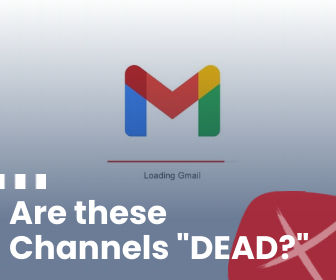
It seems like soooooo many articles/emails/ebooks/Facebook videos are titled something along the lines of: “blank” is dead. Or “Why the new ios update is going to kill email marketing.” Or “3 stats that prove print and mail is dead.” But it is? For the most part those titles are just clickbait, and the content just proves how it is very much not dead.
So, let’s take the three most common “dead” or “dying” marketing channels and see how effective they really are.
Email Marketing
I probably get an email once a week proclaiming the end of email marketing. How can email marketing be “dead?” Statista estimates that close to 320 BILLON emails will be sent every day in 2021. On average, office workers receive 127 every day. And a Forbes article from last year suggested that “every person needs at least four email accounts” for security reasons. However, quantity of emails is one reason some say that email marketing is losing its effectiveness as a marketing channel. Is that true?
Email is often one of the main touch points a brand has with a consumer and many younger consumers prefer to communicate with brands with email. Even email that’s clearly from a mailing list still feels like a direct conversation. Which contributes to email’s engagement rates. Across industry’s email average click-through-rate is 3.71 and the average open rate is 22.9. Although that may not seem like a lot, Facebook, Instagram, and twitters combined average engagement is only 0.58.
Part of the reason email gets better engagement rates is because with email, the message is directly reaching who it’s intended for.
Print and Mail
The death of print and mail has been predicted since the beginning of email. Probably even before then. One of the very first articles in our Weekly Vibe newsletter was called “Print’s Not Dead, Right?” It wasn’t in March 2020, and it defiantly isn’t now.
Direct mail average open rate is somewhere between 68 and 90%, which is double, triple, or quadruple the average open rates of other marketing channels. Do people who open direct mail actually purchase? Yes! On average people who receive direct mail purchase 28% more items and spend 28% more money!
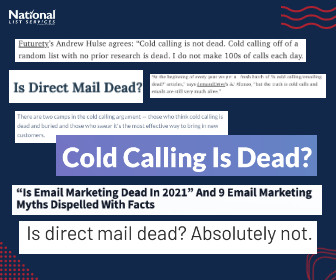
Why is direct mail so effective? It comes down to fact that we (humans) like getting mail. 41% of Americans of all ages look forward to getting their mail every day. We still want very real things in our hands, which is something totally lost in email inboxes or on social media. That tactile connection translates into 💰.
Cold Calling
Cold calling is another one of those things that’s been “on its way out” for years! Why is sticking around? At this point, an actual person to person conversation is a novelty and stands out against digital interactions. And sales, more than anything, based on connections and communications. It’s a lot easier to ignore an email than a ringing phone. It can also be harder to say no to a real person who you can actually hear.
If you add cold calling as part of your omnichannel marketing, work on your pitch, and be prepared to fail, you may be surprised at how effective it is!
What is your favorite marketing channel or tactic that’s been “dead” for years?
Let’s Talk First Party Data
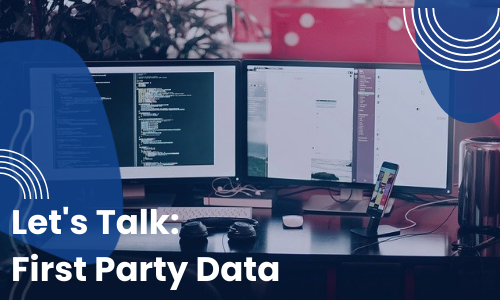
We talk about First Party Data a lot. What it is?
First party data is data that your company has collected directly from your audience which is made up of customers, site visitors, and social media followers. “First party” refers to the party that collected the data firsthand.
First Party Data is collected from the people you have the most to learn from: your current customers! That makes the data as reliable as possible.
How can you collect first party data?
You can attain first party data from your CRM, surveys and subscription-based emails or products. This is also where Google and Social Media Analytics are important.
Google Analytics has a massive list of capabilities and ways to track website data. Using tracking code, Analytics collects information about the way the website was used.
Such as:
- Time of visit
- Pages viewed
- The time spent on each page
- What browser and OS are being used
- Referring site details
- Network location and IP address.
This information can help you see where (and how) traffic is following to and through your website. Google Analytics also has a lot of other tools such as URL Builder that make it easier to track customer data.
Social media analytics are helpful for flushing out the demographics are your most engaged customers. What can you learn about customer from social media? Here’s are some things you can learn:
- What platforms your customers prefer to engage on
- What content do your customers enjoy most
- What type of campaign or advertising works for them?
- Do they have any other hobbies or interests?
- More specific customer demographics, such as age or gender
It’s also super important to connect as many touch points to your customers as possible. The more ways you have to interact with the customer the more likely they are to become a repeat loyal customer. Think about the companies you follow on social media. Have you bought from them? More than once? Are you loyal to them? Do you agree with their mission and goals? Following companies on social media feels like a personal one-on-one connection and generates loyalty.
Organization is Key
The next step of having/using first party data is organization. Having important information about your customers and leads doesn’t do much good if you can’t find it or if it’s connected properly. No matter what size your business is, having a CRM is key. The days of using a Rolodex are long gone. Now there a lot more channels of data to connect to a contact.
For example, in our CRM we keep track of more than just name, company, phone, and email. Our CRM keeps track of what social media we are connected on and any times the contact has engaged with us. We have it set up so that the CRM assigns a number value to actions a contact or lead can take, such as opening emails, clicking links, liking a post, and any orders.
How does all that information benefit us?
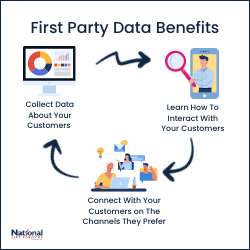
There are many ways! For one, we can use the information we have to target or retarget contacts, leads, and prospects. We can try different channels and types of touches until we find which one they respond best to. Having more than one channel connected to each contact makes multichannel campaigns possible.
The other advantage to First Party Data is that you can collect data and analytics about your customers from the channels you are using to constantly to learn more about your demographics and your customer’s buying habits. The more channels you use the easier it will be to learn about your customer. Then the more customers you have the more information you can learn about your potential target audience. You can use a Look-A-Like to build a list of potentials you can target based on information on your current customers.
What ways do use First Party Data?
Here’s how First Party Data might the key to the future cookie-less world.
How Can You Increase Sales Volume?
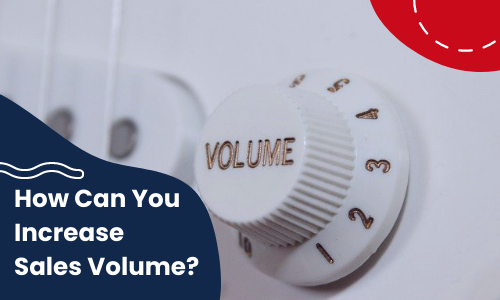
We all love talking about the big sale accomplishments, the brag worthy sales. But the day-to-day is often defined, not by the amount of a sale, but by the quantity of them. How can you increase sales volume?
Technically, sales volume is the percent of units sold within a period of time. Companies use sales volume to see what products are selling successfully.
What are some ways to increase sales volume?
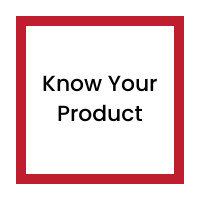
- Know your product. Do you know all the things that make your product superior to your competition? Why should a customer choose your product? What’s your elevator pitch?

- Focus on the benefits? All buyers have only one question: Does this solve my problem? They want to know that what they are receiving will benefit them and be worth the exchange of time and money.

- Sell to the right prospects. If your sales volume seems to be decreasing it may be a good time to reevaluate your target audience. It is also a good idea to get an updated a list.
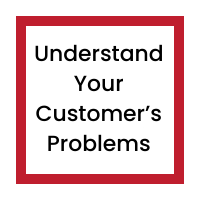
- Understand your customer’s problems. What problems are your target customers trying to solve?
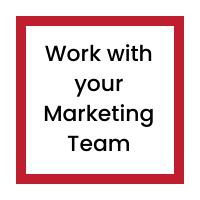
- Work with your marketing team. Your marketing team will be able to create content and structures to support your sales volume.

- Remember, time is money. Increasing your sales velocity or the amount of time it takes a prospect to move through your pipeline will positively impact your sales volume.
What ways have you found successful in increasing your sales volume?
Can You Trust Your Data?

No matter how good the machine you build it is, it’s not going to run well if your fuel is poor quality. Data is the fuel the runs all marketing. The problem is, data error is commonplace. Data providers are all trying to give their clients the best data possible but often the data they are providing doesn’t match up.
Harvard Business Review did a study in May 2020 to test the accuracy of consumer data. They found that the accuracy of Demographic data was particularly disappointing. Most were only around 50% accurate. For example, the average accuracy of gender segments classifying males was only 42.5%.
“Half the money I spend on
– department-store magnate John Wanamaker (1838-1922)
advertising is wasted; the trouble is,
I don’t know which half.”

What do those errors mean for your campaign? A study by Forrester Consulting on behalf of Marketing Evolution in fall 2019 found that “marketers estimate that 21 cents of every media dollar spent by their organization in the last year was wasted due to poor data quality, which translates to a $1.2 million and $16.5 million average annual loss for mid-size and enterprise organizations, respectively.”
How do a few errors on a record level equal so much wasted money? Record level data is the spring from which everything else flows. For a small example, if a few records in your CRM have mistakes in them, what is going to happen when you use them to send an email campaign? The opens and clicks from your email campaign may inform your audience for your social campaign. In every step and trigger along your campaign, the small errors effect more and more information downstream.
The company Truth Set is looking to minimize error across all data. How? By providing a third – party consumer report type service for data providers and marketers. Truth Set goes through every record available and assigns a percentage rating to all the attributes, such as ‘percentage that this record is actually male.’ That way, marketers won’t waste money on inaccurate data and data providers can keep their data clean.

The hope is that as more time goes on, third party quality checks and ratings will become commonplace and shrink margin for error unilaterally.
What can you do make sure your data is accurate? There are a few easy identifiers you can check for. How old is the data? How transparent is the provider with where the data came from? How consistent and relevant is it?
What changes do you think would make it easier for marketers to trust their data?
The Truth About Your Best Weapon
 Every day, thousands of advertisers and marketers wrack their brains. How do you spread your message, sell your products and change people?
Every day, thousands of advertisers and marketers wrack their brains. How do you spread your message, sell your products and change people?
Simple. Give something away for free.
Could this be the most powerful business idea of the century? Look at Google. Giving out free things made them obscenely rich.
A free search engine, YouTube and then Chrome, the free browser everybody uses. Plus free maps, free email… on and on.
Doesn’t free make your stuff less valuable? Nope. People don’t value things because they paid. They value what others value.
Doesn’t free attract the wrong people? Sure. But it attracts everybody. And if everyone likes it, it’s valuable.
And when people are hooked on it and they need it? Now you can charge real money for it. Or create a bunch of services around it and charge for them.
Sweet.
And since free works so well… you’re bombarded by it every minute. Chances are, you won’t even finish (or get the value) of this article. All because you’re distracted by something “free.”
The Cost of “Free”
Are you an entrepreneur, marketer or creative person? You’re especially at risk for this shiny object syndrome. Creative people crave new ideas, new projects, new things.
The new thing is exciting. So you invest time and money in it. And then… something else comes along. Another new idea. Of course, with “free” training.
It’s like somebody brought free donuts in the office. Mmm… tempting. Colorful sprinkles… creamy filling… you can taste the glaze just by looking at it.
And free? Don’t you pretty much need to eat one? It’s ungrateful to say no. Stupid to pass up such an opportunity. Right? Right?
Wrong. Dead wrong. Sugarcoated lies. Poison.
More than anything, new “free” stuff keeps CEOs, CMOs and smart people like you from completing projects. Jumping ship and switching strategies? This destroys consistency and momentum. And keeps you from ever seeing your potential.
A constant stream of new and free keeps you away from the best long-term game plan… Wrong or incomplete action is far worse than no action.
How many great ideas have you “tried” (but really just threw away) because of new and free?
And oh, does new and free ever make you burn through the cash!
So many hundreds of techno tools with free trials. All so impressive, effective and fun to use.
That is, until your accountant (or empty bank account) says you’ve subscribed to too many services. And jumped between too many platforms.
Do you work with employees or business partners? Oh… this is even more terrible.
Your people won’t keep up. The new/free stuff changed direction in your business yet again. And when the previous projects, tools and goals are suddenly irrelevant?
Harvard Business Review’s grim answer: your people won’t be loyal anymore. Nor productive.
A decade ago, information overload (distraction) costs the US economy $900 billion per year. Do you think it’s any better now?
Most people spend 20 hours a week managing distractions from emails alone. And even if you could recover the money, the time is gone forever.
If someone offered you 3 days of free training, what would this really cost you?
Free training is noise. It almost never gives you all you need to master the new skill you want.
Get rid of the messes and noise in your life.
Everyone’s fighting for your attention. And too many people are stealing it. Distraction is the greatest thief of time – and you can never get it back!
Sure, sometimes you need new innovation, new ideas. They can spark life into your business. But too many sparks cause out-of-control infernos.
Make sure new ideas give you strength, not destruction.
The Great Rewards of Minimalism
 Why did Steve Jobs always wear a black turtle neck, blue jeans and his New Balance sneakers every day? As the co-founder and CEO of the most valuable company in the world…
Why did Steve Jobs always wear a black turtle neck, blue jeans and his New Balance sneakers every day? As the co-founder and CEO of the most valuable company in the world…
What did Steve know about decisions and distractions that most people don’t?
Every decision, every distraction sucks up mental energy. Even a small one, like what you’re going to wear. Instead, he wanted 100% focus on making Apple legendary.
“It’s what Apple said ‘No’ to that ultimately made them successful.” – Steve Jobs
Special forces on a military mission realize this. They maintain strict isolation. No contact with other teams, no TV, news nor internet. Why?
To protect their focus and deliver perfection on their goals.
How can you do this?
If you want results like you’ve never gotten before, get crystal clear on what you want. Then clean out all the distractions. Strengthen your focus.
Make your work environment and schedule as predictable as possible. The fewer decisions you make, the more effective they’ll be.
Once you develop this attitude, your life suddenly gets simpler. And it’s simply the fastest way to reach your goals.
Don’t Just Pay For Training, Learn Like A Master
People go crazy, even with paid training… books, conferences, seminars, multiple coaches, videos and programs.
And yet they’re completely overwhelmed. Stuff just sits on their hard drive or bookshelf. Useless. They don’t apply any of it.
Yes, you need a wealth of knowledge to build real wealth… but implementation is the key. How fast can you put the knowledge to work?
There are two kinds of learners: amateurs and masters. Both want just as badly to transform their life and business.
The amateur wants to get as much information as possible. As fast as they can. And the motivation feels good and helpful for a bit.
But as time goes by, there’s no real change.
The master learner knows exactly what their goals are. And yes, their goals might mean learning lots of skills down the road.
But what are the one or two skills to focus on right now?
And the master learner picks the right mentor or coach: somebody who stretches them just enough to change…
But not so much that the learner wants to give up: the master makes sure the training is broken down into manageable chunks. Reachable deadlines. Simple actions.
And the master doesn’t move on to anything else until they… you guessed it… mastered the skill they’re learning.
Which Kind of Learner Are You?
What does your finances, your business reveal?
Now that you know the honest truth about new ideas and free training, what will you do?
Yes, giving away free stuff can be your greatest marketing weapon. But eating up time consuming free stuff is easily the biggest business problem today.
Make it your aim to be the kool-aid producer, not just a kool-aid consumer.
And when it comes to kool-aid, only drink the flavor that makes you more alive. The kind that rockets you toward your goals.
Marketing Tactics That Will Actually Make You Poor
 It’s so frustrating.
It’s so frustrating.
You heard some advice that really seemed to make so much sense, so you go for it. All in, 100%.
But then you grind and grind and nothing happens. You stay up late and hustle for every single response. It’s like you’re spinning your wheels, not getting anywhere.
What’s the problem? Does the idea even work?
Good news: marketing still works, and really well. Don’t give up. But there are a lot of popular tactics that won’t move the needle.
So why not ditch the useless ideas and start upping your game (and results) with what’s actually working? But to do this, you need to recognize these tactics that make you poor.
Here’s the first one…
Investing In That New Thing Because Everybody’s Doing It
Take AI, for example. Accenture Interactive says 80% of B2B marketers feel AI will revolutionize marketing.
Yet Andrew Stephen, writing for Forbes points out:
Look how easy it is to get Siri or Alexa confused – just ask the wrong question. Data quality is a huge issue. Garbage in, garbage out. If you feed poor marketing data to AI, you fail to get results.
Another big issue? Nobody agrees on the terminology yet.
Greedy sharks are throwing out fancy tech words and making big promises… But if you don’t carefully find out what they’re talking about, you’ll get sucked in. All your money gone. Nothing in return.
Slap together an audience selection tool, choose a few triggers, time a few messages and voila! A brand new “AI” thing with a big price tag. “Of course you should buy it,” they say. “Everybody’s getting into AI.”
Newsflash: it’s not really AI. And marketers have been using this simple, relatively inexpensive process (audience selection, triggers, message timing) for years.
Yes, you should innovate, disrupt and adopt new things, but… how much more profitable to ask yourself first: Where’s my business really at? What growth stage am I in?
If you’re a small business or just starting out, you definitely don’t need an advanced-stage marketing tactic with a high-dollar price tag on it. No matter how successful people say it is.
What to do instead?
Go back to the basics. Look at the marketing that’s always worked and still does: Pick up your phone and call people. Send emails. Leverage direct mail. There’s a far more predictable success rate here.
People know this, but why do so many still avoid what works?
It’s because you’re told to…
Just Do The Marketing That’s Comfortable
Maybe you hate selling face to face. Or on the phone. That’s why those supposedly enlightened gurus say, “Do what you love.” True, it helps to be excited about your work. And you should always sell yourself on what you’re doing.
But if you take these “follow your passion” phrases literally, you’re on a road that leads to…dead broke. So many of these traditional-marketing haters decide that digital is the only way to go, so they…
Hide behind the keyboard and pray to get rich quick.
And some metrics are so misleading. One Twitter influence metric can rank you in the top 2% of your industry, even if you have almost no clicks through to your website.
Other people crank out video after video on Facebook Live or Periscope. And while this works for some…
Hearts and thumbs up will not pay your bills.
What about paid advertising? Will you get the results you want with Facebook audience targeting? Let’s say you want to target everyone on Facebook with a yearly income of $50,000+ who also like boating.
But if you’re not targeting that same audience with mail and email, what are you missing?
Guaranteed, there are quite a number of middle-class boat enthusiasts who don’t really use Facebook that much. And an even larger number who might use Facebook, but they won’t get into your sales funnel this way.
Speaking of funnels, ever heard of click funnels? You can spend a truckload on these – but how much money will they really make you?
Granted, some people make a living with these things. Yet how many businesses are finding out the hard way that they aren’t what they thought.
What to do instead?
Even digital marketing experts agree: don’t sell directly on social media. The only purpose of social should be to get people onto your website and your email list. Where you can… sell them directly.
Ask yourself: What is going to get me to my audience the quickest? How do I get in front of people who will spend money? What’s the quickest way there?
Inevitably, this leads you back to the basics… calling people, collecting and sending emails, using direct mail.
Here’s another road to the poor house…
Free Training
Just because somebody says is free doesn’t make it free.
What if somebody called you up today and gave you 3 full days of free training? And what happens, if after 3 days, you realize: well, that was kinda cool, but I knew most of it already. Common sense stuff.
Or they show you only one piece, just one of the many ingredients you actually need to succeed.
And in case you hadn’t figured this out… free training is there to sell you something. And of course the presenter makes it look SO easy. But the reality is, what you learned can sometimes take you months or even years to get set up and working profitably.
Truth is, those 3 days didn’t REALLY help you. You could have been using your time to actually get customers. So how expensive were those 3 days…really?
Well, how much do you WANT your time per hour to be worth? And once you’re actually worth that much per hour, you’re going to get paid that much. Without fail.
What to do instead?
Be very intentional with what you learn. When you write out your goals, ask yourself: what exactly do I need to learn to reach these goals?
And then force yourself to learn ONLY those things. Don’t get distracted.
What All This Means For You
Small and medium-sized businesses are getting fleeced by so many schemes and scams. All while good old-fashioned phone calls, direct mail and email marketing will help your business grow.
Think of what stage you’re at in your business. If you’re mowing lawns (or anywhere near just getting started with your business – you know who you are), you don’t need click funnels or AI.
Maybe you just need to use door hangers. Or a sign on your car. Or pound the phone. Even Mark Zuckerberg got Facebook started by sending a bunch of emails to his college buddies.
Sure, there are all those cool, shiny, fantastic marketing tools out there. But they may not be for you. At least not yet.
But if you stay focused and stay away from all these distractions, you can actually take your business to the next level. The level where there’s no more frustration, stress and worry about what works. Where there’s freedom to play with new ideas and options.
Where growing your business is fun again.
| Click here to learn more |
A Huge Mistake That Will Kill Your Profits Immediately
 At first everything was great. Tens of thousands of customers accept offers and cash in on coupons. The customer analytics data pouring in is an absolute gold mine.
At first everything was great. Tens of thousands of customers accept offers and cash in on coupons. The customer analytics data pouring in is an absolute gold mine.
Any company would love to have these solid, specific, fresh details: what offers people are actually responding to, when, what they’re buying, how they’re buying, what they’re ignoring and what they buy again.
But then the bottom dropped out…
The marketing director suddenly decided to ignore all this precious response data and go in a new direction. Months later? Sales are stagnant and everybody wonders what happened.
2017 was a bloodbath for companies making stupid mistakes like this. And sadly, the trend will continue. Why? It doesn’t have to happen, but people simply refuse to learn to market. “You’re selling from your heels,” the well paid expert explained to the nearly dead company. How does he explain the advice?
“It means you don’t 100% believe in what you’re doing.”
Despite all the hard work they put into marketing, tracking customer behavior, analyzing the data and sending out more offers… they threw it all in the trash.
Let’s say you have an employee. He’s a likeable and friendly salesman. But there’s a customer with deep pockets standing outside your door. And a whole week goes by. The customer still passes your door, pausing, waiting for an invitation to come in and buy. But your employee does nothing.
How long would you keep this employee?
Do you make this same blunder with your response data? It cost you real time, effort and money to execute marketing campaigns, track customer behavior and then store the data. Yet if you do nothing with it, this will cost you far more money than you ever spent to get the data.
In one study, 93% of businesses say data is important (or very important) to their success. Yet some companies lie to themselves: “Oh yes, we use our data.” But the truth is, they don’t send out any marketing until the next quarter. Data from the last quarter or last year?
It’s actually rotten by now. Unusable.
Nobody can deny it. Our business environment is changing so rapidly it takes real focus to keep up. It’s vital to know exactly who your target audience is… this month, this week, today. And it’s becoming essential for survival to use behavior data to narrow your focus down to who is going to buy right now.
Let’s say your analytics find 100,000 people who look just like your current customers. Yet predictive modeling shows that only 15,000 of these people will buy immediately. You’re smart. You don’t dismiss the other 85,000. You simply market to them differently than the 15,000.
You keep on digging. You find 5,000 among the 15,000 who become the prime focus of your marketing initiative. And you send out offers to them at least every month.
Companies who will dominate this year have a strategy and a plan that includes action like this. Are you starting to appreciate why it’s absolutely critical that you use really reliable data?
And then act on it?
The biggest mistake companies make is failure to take action. Enough action. Often enough. To grow their business and achieve the results, success and freedom they want.
Don’t make this mistake. Guard your data. Use your data. Refresh your data. Profit from your data.
Let’s make this year the best one yet.
| Click here to learn more |
